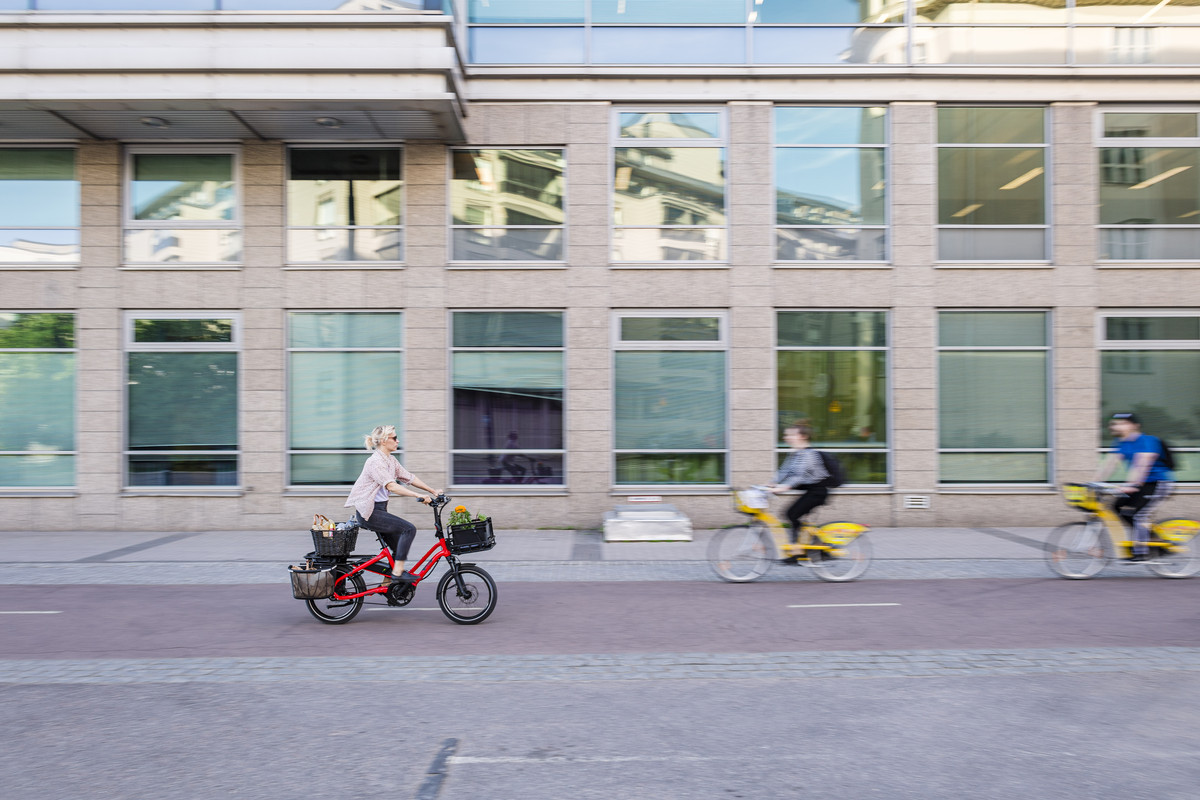On the 3rd March, the European Court of Auditors released a report revealing the progress of the sustainable urban mobility transition in the EU since the implementation of the 2013 Urban Mobility Package. Below, we have summarized key points of the report that show how the cycling industries are essential to increasing the sustainability of urban mobility.
The car-centric state of urban mobility leads to huge economic costs every year as a result of air pollution, congestion, health issues and environmental damage. In the EU, the annual cost of congestion is estimated at €270 billion, and there are indications that more fluid traffic increases economic growth, meaning the total cost could be even higher. Health issues are caused both by a lack of physical activity and air pollution. Urban areas account for about 23% of the total CO2-emissions from transport in the EU. Pollution-related health issues and deaths cost the EU up to several hundred billion euros as up to 96% of the EU’s urban population are exposed to levels of air pollution considered damaging by the World Health Organization. The overall economic costs of road transport in the EU are estimated at €987 billion according to a 2019 Commission report. Cars account for about 57%, compared to a meager 1,9% for buses or coaches. These are all clear indications that there is a need for a substantial shift towards more sustainable, and active, forms of transport – such a shift makes not only ecological sense, but economic sense as well.
According to the Special Report by the European Court of Auditors (2020), this shift has yet to occur in a substantive way. The report assessed the progress towards sustainable urban mobility improvement since the 2013 Urban Mobility Package in EU cities, the following of EU guidelines and targeting of EU funding to achieve more sustainable urban mobility and whether projects were based on sound strategies and proved effective. Since 2013, cities put a range of initiatives in place, as the Commission intensified its support. However, this did not lead to a significant shift to sustainable urban mobility for a number of reasons. Initiatives were not always based on sound strategies due to lack of relevant and reliable data, lack of quantified targets and operational plans to implement the strategies and insufficient coordination with other plans and of consideration for the periphery. Coordination is particularly important in terms of improving connectivity and ensuring that public transport and active mobility become time-efficient options for citizens living on the peripheries.
There are two main findings of the report we want to highlight. Firstly, one main shortcoming of implemented initiatives was that they did not stipulate concrete measures to dissuade the use of private cars. Not only is this crucial to ensure a shift to sustainable mobility occurs, but also to ensure that the shift to active mobility does not come from public transport users, but rather private car users. Examples of such measures include replacing car parking with bicycle parking, establishing traffic-free zones and implementing congestion charges. All three of these measures have been proven successful in several European cities, including Leipzig, Madrid, Stockholm and Barcelona. Secondly, cycling has considerable potential to increase the sustainability of urban mobility, and that at low investment and maintenance costs. Cycling infrastructure has been proven to have a relatively high return on investment and to overall be more cost-efficient than many other types of road infrastructure. The strategy of cities to promote sustainable urban mobility should aim to considerably increase the share of bicycle- and public transport use. For such a strategy to be fulfilled, extensive political leadership and communication efforts are required to win acceptance from citizens – particularly when implementing measures aiming to dissuade private car use.
An important element that seems to be missing from this Special Report is urban freight, which accounts for 25% of CO2-emissions from urban transport and 30 to 50% of other transport-related pollutants [source]. It also accounts for 10 to 15% of urban traffic miles, making it an important part of urban transport that contributes to congestion issues and noise pollution as well [source]. To maximize the reduction of air and noise pollution and congestion, and health issues and costs to society linked to them, it is important to consider urban freight when discussing ways to shift to sustainable urban mobility. An effective, green solution that already exists are cargo bikes. According to our City-Changer Cargo Bike -project, they could replace 32% of delivery trips, 50% of service trips and 77% of shopping trips; providing solutions at the individual level as well as the urban logistics level.
Overall, bicycles, whether it be e-bikes, cargo-bikes or others, are key in achieving the shift to sustainable urban mobility and making our cities climate-neutral. Well-connected urban transport systems combining bicycles, public transport and trains need to be implemented and combined with measures that actively deter private car use, to make our cities liveable, citizen-oriented and sustainable.
Read the Special Report for more details, conclusions and recommendations by the European Court of Auditors.
Image from Tern Bicycles.
Share on Linkedin Share on Facebook Share on Twitter Subscribe to our newsletter